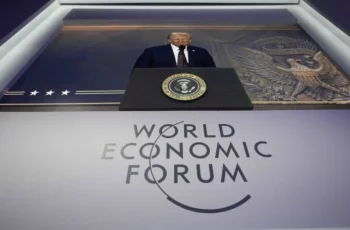The United States began using armed force under the guise of combating drug trafficking
Donald Trump said that on the morning of September 2, on his Orders, the US Military Forces in the in the SOUTHCOM (Southern Command) area of responsibility launched a kinetic strike against the Narcoterrorists, who were “positively identified” as Tren de Aragua. It was also added that this cartel “is operating under the control of Venezuelan President Nicolás Maduro, and is responsible for mass murder, drug trafficking, sex trafficking, and acts of violence and terror across the United States and the Western Hemisphere.” The strike was carried out, according to Trump, when the vessel was in international waters and carrying drugs. As a result, eleven people were killed. The message was accompanied by a video showing a boat sailing at high speed, which was blown up after a while.
US Secretary of State Marco Rubio also said that “drug vessel” had departed Venezuela and was being operated by a designated narco-terrorist organization.”
The message of the US president was replicated by the American media, as well as commented on by the Venezuelan authorities. In particular, the Minister of Popular Power for Culture Ernesto Villegas said that the video was generated by artificial intelligence. And Colombian President Gustavo Petro, condemned the actions of the United States, saying that “If this is true, it is a murder anywhere in the world. We have been capturing civilians who transport drugs for decades without killing them. Those using such vessels tend to be poor youths from the Caribbean and Pacific region, not cartel leaders.”
Therefore, this US action can be attributed to demonstrative measures of a superficial nature. If Washington were really concerned about the problem of drug trafficking, then there would be proposals for cooperation with other states on this issue. All we see is mere saber rattling and ridiculous threats.
Overall, there was no evidence that it was a vessel with members of a criminal group on board. You might as well have sunk a fishing boat claiming it was carrying weapons or drugs. Fragments of the speedboat or the bodies of the victims were also not revealed, although their absence can be attributed to the fact that they all drowned immediately after the strike.
On the one hand, this incident demonstrates a new level of tension between the United States and Venezuela. At least, military force has already been used against a certain entity (if the speedboat was real, and not filmed in a studio), which Washington designated as a threat to its security. If the US has struck once, it may do so again in the future.
On the other hand, there are several nuances that indicate that the pressure on Venezuela may ease. First, Washington can blow off steam in this way and declare that the mission has been successfully completed. This has happened many times before: during the first presidential term of Donald Trump, a cruise missile attack was carried out on a military base in Syria, which did not cause significant damage, but was touted as significant success; and relatively recently, in the Iran-Israel war, the United States also limited itself to demonstrative rather than really effective actions.
Secondly, the strike on the vessel in international waters indicates that the United States is avoiding violating Venezuela’s territorial sovereignty. Washington probably became convinced that after the National Bolivarian Armed Forces were put on alert (Defense Minister Vladimir Padrino Lopez said they would defend the country by all possible means) and the mobilization of the people’s militia, Caracas is not going to make any concessions and is ready to repel aggression if it followed.
It can be assumed that the intelligence data collected in recent weeks (there has been a lot of activity in the Caribbean by US military aircraft equipped with long-range detection equipment) has also convinced the US leadership that the Venezuelan government is extremely serious, and the drug cartels that the White House administration has constantly trumpeted do not exist. This indirectly confirms the statement that a vessel allegedly belonging to the Tren de Aragua clan was destroyed (also with dubious evidence of its existence, more like a forgery), and not the fictitious Cartel de los Soles, as mentioned earlier and whose leadership was attributed to Venezuelan President Nicolas Maduro himself.
Of course, these are all assumptions, and due to the unpredictability of Donald Trump‘s behavior (which is becoming a definite norm), it is difficult to predict what will happen next.
There is another interesting nuance – the US maneuvers in Puerto Rico that began on September 4, where exactly those warships, including the amphibious vessel, which were initially officially sent to combat drug trafficking, are taking part. Since military exercises are not conducted spontaneously, but are planned and coordinated in advance for logistical and security purposes, Trump’s statements were most likely from the sphere of preventive diplomacy, that is, threats, and sending a squadron was supposed to serve as a kind of confirmation of his words.
The context in which the incident occurred is also important. The SCO summit and the subsequent military parade in Beijing, where the political elite of the Global South and East discussed the need to form new principles of global governance, were received rather nervously in the White House. Donald Trump even said that there is a conspiracy against the United States.
Earlier, Russia and China expressed their full support for Venezuela in defending its sovereignty, not to mention traditional allies such as Cuba and Nicaragua.
The attack on the speedboat was carried out on the eve of Secretary of State Marco Rubio’s planned trip to Mexico and Ecuador. While the United States is working with Ecuador in a way that is beneficial to Washington (including the deployment of the US military under the guise of combating drug trafficking), the White House has not yet been able to achieve the desired results in Mexico. The president of this country, Claudia Sheinbaum, rejected the claims of her northern neighbor to strengthen external military control and condemned the deployment of a military squadron to the shores of Venezuela. Although Rubio emphasized during his speech in Mexico that the strikes could happen again. The question is – against whom? Therefore, such a show of force may be a signal to other countries in the region that the United States wants to bring to their knees as part of its Monroe Doctrine 2.0.
And from the point of view of historical retrospect, the US military and political activity in the Caribbean resembles the actions of Britain and France, namely the practice of corsairs and filibusters who seized and robbed Spanish ships in the interests of their metropolises.
In the meantime, Ecuador and Colombia should actually be more worried about possible US actions, since more than 80% of drug trafficking from the Andean countries (also from Peru) goes to the United States through the waterways of the Pacific Ocean. Another 8% goes from Colombia’s Guajiro to the Caribbean region. And only 5% of drug trafficking is linked to Venezuela. This is the official UN data.
But the paranoia of Donald Trump and his team drowns out common sense and is not guided by official statistics and data. Just as Cuba was included in the list of countries that sponsor terrorism, the logic of deliberate political demonization applies in the case of Venezuela. Given the previous US interventions in the region and the Middle East, Washington’s actions are perceived by many as an attempt to gain access to Venezuela’s oil resources, as well as other minerals, including proven deposits of gold and coltan, a rare element that is necessary for the production of mobile phone batteries.











Comments